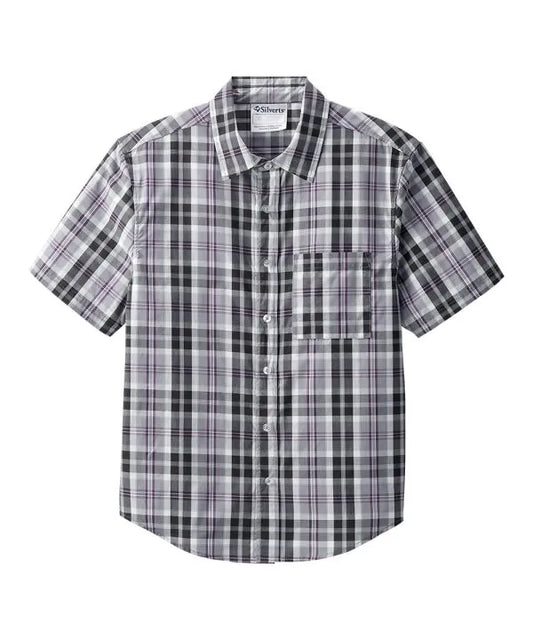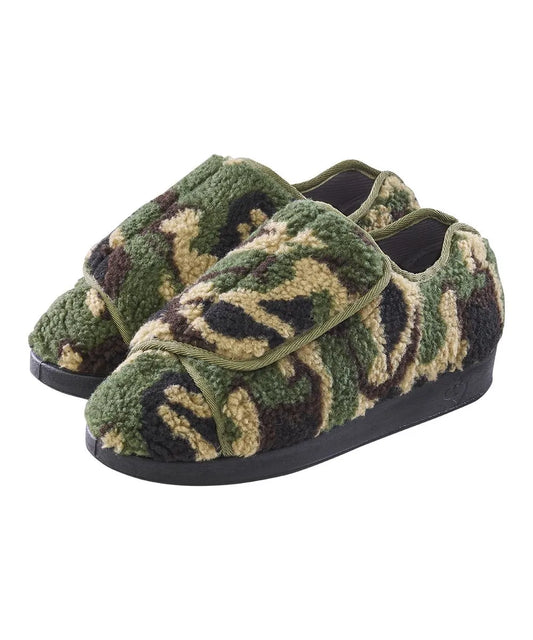Written By: Abdulmalik Al-Aghbari
Choosing what to wear for a big night out-say, a wedding or swanky party-should be fun, not a source of angst. But for those with physical disabilities, getting dressed up can be a true grind. Off-the-rack formal wear tends to be full of fussy elements-zippers, tight stitching-that are difficult to navigate. Buttons look nice, but aren't exactly useful if your hands don't cooperate. And this is where June Adaptive is able to step in and help with the issue at hand.
Adaptive clothes use open-close magnets, flexible materials, or clever hidden seams, making any tough dressing moments feel light and zero stress. The elimination of snaps and zippers makes them lean on subtle upgrades to keep things flowing without losing any style points. Rocking a tidy jacket or an elegant dress? Absolutely doable. Thanks to low-key smarts, people are able to walk out assured and fully themselves.
June Adaptive listened to real people who shared real struggles, mainly those who have to deal with dressing challenges or live with disabilities and are confined to wearing only chunky, outdated gear because that is what fits their needs. So they asked themselves, what if comfort didn't have to mean sacrificing looks? That's when things shifted. Now, straight from the team, fresh tips drop right here: ways to feel easy in your skin while still rocking outfits that turn heads.
Challenges Of Formal Wear For Disabilities
Fancy clothes usually care more about looks than comfort. But when someone struggles to move or deals with constant aches, getting ready for big events can feel like a chore.
Common challenges include:
- Stiff buttons, tiny hooks - these need steady fingers, something folks with joint pain or shaky hands might lack. Tough closures like zips aren’t easy when movement’s a challenge.
- Tight fits often come from stiff designs that limit motion - making you feel squeezed or uneasy throughout the day.
- Limited Access: Basic models often need lifting arms or turning motions - moves that don't work for all users.
- Heavy fabrics can make certain suits or dresses feel stuffy - especially if you’re sensitive to warmth - since dense textiles hold in body heat, leading to extra irritation during warm weather.
- Lots of times, it's hard to spot stylish choices that don't scream "hospital," which turns fancy gatherings into awkward hurdles.
Adaptive clothes fix these issues by redesigning how garments work. Instead of regular styles, they feature side or rear openings - while stretchy materials help them fit better. Magnetic closures show up instead of buttons; this speeds things up while reducing risk.
A solid pick? Try the Men's Long Sleeve Henley Shirt with Back Overlap featuring a rear overlap design. Though it keeps that sharp, traditional Henley vibe, the clever back panel means slipping into it takes no arm lifts or fiddling with closures. Works just as well layered under tailored trousers or sport jackets when you need to dress up. People who have disabilities find clothes that fit their needs more than just easy - they’re a way to feel included, also to feel good about themselves.

Where To Find Adaptive Dress Clothes
Fancy occasions need outfits that seem classy but don’t sacrifice ease. Luckily, companies such as June Adaptive are closing the divide - delivering sharp looks without skipping practicality.
While checking out flexible dress clothes, keep an eye on these details:
- Sneaky slits - placed at the back or sides - let you swap outfits quickly, no need to mess with how it looks from the outside.
- Soft stretchy fabrics: comfy stuff gives you room to move while taking stress off achy joints.
- Hidden snaps: magnetic or sticky tabs that fit smoothly, giving a clean finish.
- Easy-to-wear styles: Clothes like shirts, gowns, and outfits designed for those using wheelchairs or artificial limbs - built for comfort without hassle.
A neat option? Try the Women's Active Top with Back Overlap. Though basic, the overlapping detail at the rear adds a hint of class - great with skirts or dress pants. Perfect for ladies wanting hassle-free outfits without losing charm during fancier events.

For folks who move differently, clothes that adjust easily help them shine at big moments. Whether it’s a fancy meal or a celebration, feeling sharp shouldn’t come with hassle.
How To Modify Existing Formal Wear
Sometimes you don't need new adaptive clothes. But with small tweaks, regular formal outfits can work better for accessibility needs. These changes cost little, make sense daily, also keep your look intact.
Check out these easy tweaks you could try:
- Use magnetic snaps instead - swap out regular buttons or zips for magnets so fingers don’t have to work as hard.
- Hidden slits on the side or rear make it simpler to get into clothes - commonly seen in tops and gowns - by offering sneaky entry points without changing how they look.
- Try stretchy materials instead - tailors might add flexible bits to trousers or jackets so you move better.
- Cut pants or dress edges shorter - so they won't scrape the floor when seated. This stops wear from rolling over rough surfaces while keeping things neat-looking. Instead of bunching up near wheels, clean lines stay intact.
- Swap belts for stretchy waistbands - no more fiddling with snaps or readjusting once you're on the move.
If tweaking formal clothes feels tricky, someone who’s worked with older adults or people with movement issues might be just right. Folks like that focus on easy-to-wear styles yet know how to keep things looking sharp without sacrificing comfort.
Comfort matters too. When outfits are modified this way, getting dressed becomes simpler - on top of letting folks relax, shift around, or take part in big moments without aches or tightness holding them back.
Adaptive Accessories For Special Occasions
Extras matter when finishing off a sharp look - yet they often boost ease too. Gear made for real life blends style with smarts, giving folks with mobility hurdles more freedom to do things solo.
Some samples right here:
- Slip-on trousers: Zip on the side or open at the front so you can change quickly while cutting down awkward bends.
- Wraps plus shawls? They work instead of bulky coats - simple to tweak or toss aside when you’re done.
- Shoes that grip well: designs with straps or big entry points keep your feet steady plus cozy when you're out and about.
- Flexible underwear made without seams or tags helps calm skin that’s easily bothered - so it feels smoother day by day.
The Unisex Recovery Pants with Side Zippers by June Adaptive slot right into this group. Though built for healing, their clean, simple look works just as well for dressy-casual outings. Thanks to the zips on the sides, slipping them on is a breeze; meanwhile, the cozy material keeps you comfortable no matter how long you're out - perfect when you've got back-to-back plans.

Adaptive gear saves hours while boosting self-assurance - simple tweaks like tailored adaptive trousers or a versatile wrap offer ease and flair at once.
Styling Tips For Adaptive Formalwear
After picking adaptive clothes, nailing the right style brings everything together. These outfits focus on ease and usefulness, yet still give room for personal flair when showing off your vibe.
Check out these easy fashion hints:
- Mix relaxed fits with timeless touches - try a scarf or some bold jewelry to lift the vibe. Instead of matching everything, let one piece stand out with a sharp pocket square.
- Pick materials suited to the occasion - cotton mixes or silk-like options feel light yet still look sharp.
- Stack smart - try a vest, wrap, or jacket that shifts shape but stays slim. Instead of piling on, build with pieces that fit close and move easy.
- Stick to calm main shades - mix in hints of blue, grey, or deep red for a sharp dress-up style that never fades.
- Go for comfy shoes that grip well - these fit right into dressy looks without hassle.
Adaptive formal clothes make it simple to mix comfort with style. Take someone in a wheelchair - they could wear fitted shirts along with flexible pants that help support posture. A person dealing with arthritis may go for roomy-top blouses matched with soft waistband slacks to move more freely.
Folks can show who they are without sacrificing comfort, thanks to flexible dress clothes. This new take on getting dressed up isn’t only about looking sharp - it’s more about ease and doing things your way.
Final Thoughts
Going to fancy gatherings should be fun, making folks feel close - never tense or out of place. Still, when someone lives with a disability or struggles to move easily, picking an outfit might seem like too much. Clothes made for real needs shift the game, letting fashion become strength instead. Anyone can join in proudly, seeing their look works well while looking sharp.
Flexible styles are changing what people see as stylish. Not only do they show ease goes hand in hand with class, but also feel right during everyday use. A thoughtfully built adaptable outfit isn't meant to stand out - it just fits the wearer more smoothly. Instead of regular closures, hidden magnets offer easier access; meanwhile, elastic materials follow body motion without resistance, giving real benefits in both freedom and self-reliance.
Inclusive fashion means more than meets the eye - it shows appreciation for personal expression, along with the idea that looking good isn’t reserved for a few. Clothes made to adapt let people walk through new gates, not only folks with disabilities but seniors, those healing up, or anybody wanting comfort without losing self-assurance.
In essence, adaptive clothing shows how far we've come - highlighting variety by smart styling. It signals that real grace comes from being easy to use, respectful, yet letting folks savor key experiences with no barriers.
To read more articles like this, sign up for the June Adaptive Newsletter!















